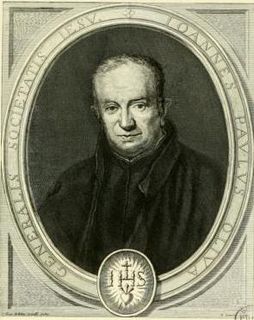June 20th: Blessed Thomas Whitbread and BL John Fenwick, SJ
BL Thomas Whitbread:
Born: circa 1618
Died : June 20, 1679
Beatified : December 15, 1929
BL John Fenwick:
Born: circa 1626
Died : June 20, 1679
Beatified : December 15, 1929
 Fr Thomas Whitbread, the provincial superior of the English Jesuits, Frs John Fenwick, William Harcourt, John Gavan and Anthony Turner, the martyrs of England, were falsely accused of plotting to assassinate King Charles III and overthrow the government. They were the innocent victims of a plot hatched by the infamous Titus Oates whom the provincial had refused to accept into the Society. Oates sought revenge and began to plot against the Jesuits and succeeded.
Fr Thomas Whitbread, the provincial superior of the English Jesuits, Frs John Fenwick, William Harcourt, John Gavan and Anthony Turner, the martyrs of England, were falsely accused of plotting to assassinate King Charles III and overthrow the government. They were the innocent victims of a plot hatched by the infamous Titus Oates whom the provincial had refused to accept into the Society. Oates sought revenge and began to plot against the Jesuits and succeeded.
Thomas Whitbread was a native of Essex but he attended the Jesuit College at Saint-Omer in Flanders. He entered the Society in 1635 and was ordained in 1645. Two years later he returned to England and enjoyed a fruitful apostolate of more than 30 years. In 1678, during the first year of his term as provincial superior of the Jesuits in England, Fr Whitbread visited the communities on the continent that trained Catholics from England. At Saint-Omer he encountered Titus Oates, a student at that school who asked the provincial to admit him into the Society of Jesus. Oates, a deposed Anglican minister who converted to Catholicism and studied at the English College in Valladolid, Spain was not accepted by Fr Whitbread who also ordered him to be expelled from Saint-Omer because of unsatisfactory behavior there. Oates returned to London where he joined forces with Israel Tonge, who harbored suspicions of the Jesuits’ plotting against the king. Tonge and Oates invented the story of a plot by the Jesuits to assassinate the king, overthrow the government and re-establish the Catholic religion. They were able to present this accusation to the king in mid-August, 1678, but he did not find it credible. So Oates fabricated more details and presented the revised accusation to the king’s privy council on September 27, setting into motion a deadly chain of events.
Meanwhile, the wild accusations Oates made fanned a flame of fear that made people hysterical with tales of Irish and French Catholic conspirators crouching in cellars ready to jump out and slit the throats of good Protestant subjects of the king. The general outcry was enormous; before it ran its course, some 35 innocent people had been executed; hundreds more perished in prison, some of them victims of the plague.
 John Fenwick’s family name was Caldwell and he was born in Durham. As his parents were Protestants he was raised in that established religion. While growing into manhood he studied the religious differences in England and when he was convinced of the truth of the Catholic faith, embraced it. His parents evicted him from their home when they were unable to talk him out of his new religion. Alone he travelled to the Jesuit College in Saint-Omer in 1654 and studied seriously. On September 28, 1656, at twenty-eight he entered the Jesuit novitiate at Watten. After his philosophical and theological studies at Liege, he was ordained in 1664. He returned to Saint-Omer College and was the college procurator until he was sent on the English mission in 1674. He was stationed in London and served as the college procurator until his arrest on September 28, 1678.
John Fenwick’s family name was Caldwell and he was born in Durham. As his parents were Protestants he was raised in that established religion. While growing into manhood he studied the religious differences in England and when he was convinced of the truth of the Catholic faith, embraced it. His parents evicted him from their home when they were unable to talk him out of his new religion. Alone he travelled to the Jesuit College in Saint-Omer in 1654 and studied seriously. On September 28, 1656, at twenty-eight he entered the Jesuit novitiate at Watten. After his philosophical and theological studies at Liege, he was ordained in 1664. He returned to Saint-Omer College and was the college procurator until he was sent on the English mission in 1674. He was stationed in London and served as the college procurator until his arrest on September 28, 1678.
In the dead of night on September 28, Oates led an armed force of parliamentary soldiers and seized Frs John Fenwick and William Ireland. Then before dawn the next morning, Oates and his men also arrested Frs Whitbread and Edward Mico who were seriously ill after they contracted the plague from their recent trip to Antwerp. However as they were too ill to move and also because they were under the protection of the Spanish ambassador in whose residence they lived, soldiers were posted to guard both the two bedridden men. By December Fr Whitbread’s health had improved enough that he could be moved to Newgate Prison where Frs Fenwick and Ireland were; Father Mico had by this time died of maltreatment.
The three Jesuits were brought to trial on Dec. 17, 1678, at the Old Bailey. Oates testified that he had seen the three priests at a tavern planning to kill the king, overthrow the government and re-establish the Catholic religion. The three men had indeed met from April 24-26, at the palace of St. James, where the Jesuit Fr Claude La Colombière was chaplain to the Duchess of York. Their topic was picking a Jesuit to travel to Rome and present the regular triennial report on the province to the superior general.
Oates had probably heard of the meeting when he was at Saint-Omer, but he was certainly not present at St. James Palace. When the only other witness, failed to corroborate completely Oates’ testimony, there was insufficient evidence to find the Jesuits guilty. The court then took the extraordinary step of postponing their trial to a later date, despite the fact that witnesses had already been heard. The three Jesuits were sent back to prison. In 1679 three more Jesuits were arrested on the basis of more false evidence provided by Stephen Dugdale, a convicted embezzler. Fathers William Harcourt, John Gavan and Anthony Turner were included in the original charge of plotting against the king. Oates again claimed that he had witnessed the meeting at the White Horse Tavern. Father John Gavan served as the spokesmen for the Jesuits, and answered the deceitful claims of the prosecution. The defence produced 16 witnesses from Saint-Omer testifying that Oates had not been at the college on that day and not even in England. Despite the clear weight of the evidence on the side of the defence, the court instructed the jury to believe the prosecution witnesses rather than those of the defence. The jury returned a verdict of guilty, condemning the five Jesuits to die for treason.
The execution took place on Friday, June 20 at Tyburn. Father Whitbread said: “I do declare to you here present and to the whole world, that I go out of the world as innocent and as free from any guilt of these things laid to my charge in this matter, as I came into the world from my mother’s womb…..As for those who have most falsely accused me….I do heartily forgive them, and beg God to grant them His holy grace, that they may repent of their unjust proceedings against me.” He was followed by Fr Fenwick and the other three Jesuits who made their final statements, and then they all stood quietly in prayer on the gallows, nooses around their necks, waiting for the cart to pull away from them. Suddenly a rider burst onto the scene crying, “A pardon, a pardon.” He gave the sheriff a document announcing the king would pardon them provided they admit their guilt and tell all about it. The martyrs thanked the king for his merciful intentions, but firmly noted that they could not acknowledge any guilt for a plot that never existed. They would not accept pardon if it meant they had to lie. They paused for private prayer again, and then the cart pulled away. The bodies were pulled down and quartered. Their butchered bodies were claimed by friends who gave them burial in the churchyard of St. Giles-in-the-Fields.
Frs Thomas Whitbread and John Fenwick together with their three Jesuit brethren were beatified by Pope Pius XI on December 15, 1929.
